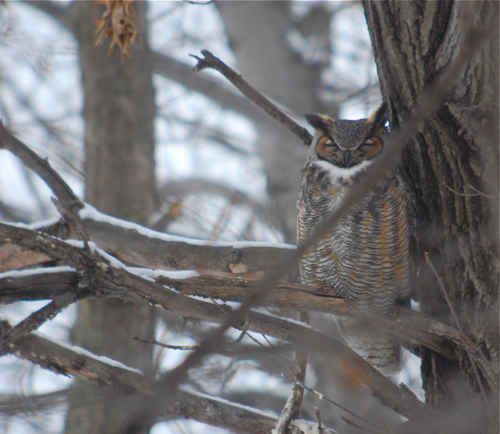Well, Friday morning turned out to be far more exciting than I anticipated! I had to work at the park service in the afternoon and evening and I was meeting a friend for a late breakfast. I thought that since it was warm, I'd peek at the great horned owl nest in my neighborhood and see if the owlets were more visible...

One owlet was easily visible with the naked eye on approach. Great horned owls do not build their own nests, they take over old squirrel, hawk or heron nests. They don't even make any renovations before they use it, they just squat. As the chicks grow, the nests soon shrink. Between the dwindling nest and the larger chicks, the female no longer fits very well and perches near the chicks.

It appears that the nest contains two owlets! When I arrived to the general nesting area, I could hear the crows heartily mobbing. I saw the male fly over with a flock of about 20 crows in tow. The chicks showed a bit of interest in the commotion but mostly laid low.

The female was very interested in the crow activity as she watched the crows surround the other owl. What was interesting was that I thought the crows were chasing one owl, I later ran into a fellow birder who was close the crows and he said the crows were after two great horned owls and a third flew in. I wonder now that as I was watching her keen interest in the crow activity, if she was responding to an intruding great horned owl into her territory rather than the corvids gathering around her mate?

She soon left the nest to try to get a better look at the mobbing crows but still would turn around to keep an eye on her chicks. It was so strange to me to see a secretive owl perched out in the open in the middle of the morning. Not long after I took this photo, she bolted off into the middle of the flock of crows. The owls all went in separate directions and the crows split their murder into 2 smaller groups, diving and cawing at the owls.

With the female away, the young owlets closed their eyes and assumed an upright position. I wondered if this was all part of a camoflauge instinct? With the adults going after the crows, it stirred up the surrounding birds. Robins began giving their alarm calls and then an adult Cooper's hawk flew in. The hawk missed its intended prey...then suddenly noticed one of the owls and started diving at it and screaming its call. If you're not familiar with a Cooper's hawk mobbing an owl, let me remind you of the video of the Cooper's hawk mobbing a plastic owl (they never work to scare birds away).

The Cooper's hawk then made a wider pass and went straight for the owl nest, hell bent on mobbing the chicks. First it bounced off the nest and then started to make a second dive, by that time, the female great horned owl was back on the nest and ready to kick some serious accipiter ass if it tried it again. I have never seen a great horned move so fast in my entire life. I've always referred to them as the Sunday drivers of the raptor world...I got schooled--they can move very fast when they need to. The above photo is on the Cooper's hawk's second attempt at a dive on the nest. The blur above the nest is the female owl defending her chicks.

The angry Cooper's hawk perched nearby and shrieked out angry, "kek kek kek kek kek keks" at the great horned owl. I suspect this bird has a nest nearby.

The great horned owl stood at her nest above her chicks and hooted back her retorts after every kek the Cooper's hawk gave her. The owl even barked a few times in warning at the hawk. It was the weirdest argument I'd ever heard. As the two continued, a few crows gathered nearby to continue their remarks on the two predators they detested. Then, out of nowhere, a broad-winged hawk screamed nearby. Three raptors all at once! An owl, a buteo and an accipiter.

The chicks nestled against the female as if to say, "Yeah, my mom is awesome."
I wondered, how long was this battle going to last? The suspense was killing me...then I got my answer. I heard a helicopter coming fast and approaching low.

This was not digiscoped, this helicopter was THAT low. It was Metropolitan Mosquito Control dropping their corn pellets full of Bti and Methoprene to kill of mosquito larvae. The helicopter skirted the tops of the trees, the owl, crows and hawk scattered. The adult female owl apparently thought, "Cooper's hawk, yeah, I can kill that," but when the helicopter appeared her attitude shifted to, "yikes, too big for me kids, you're on your own, see ya!"

After the raptors scattered, pellets rained down and bounced off my body. I could hear nearby woodpeckers give low warning noises to each other. Robins were on high alert.

A couple of nearby mallards seemed to dig the pellets and tried to eat them as soon as they hit the water--they were the only birds who seemed to be unaffected by the strange aerial machine. The city assures me that the pellets are harmless both to me and the wildlife that might consume it. I was tempted to start running around like Cary Grant in a Hitchcock movie, but it's not so much fun with a spotting scope in tow.

The helicopter made a few more passes and a few moments later, one of the owls flew back with a few pesky crows hot on its tail.

She perched right above my head and the crows still followed. She looked over to see her chicks were still in the nest and I think scan for the Cooper's hawk. Most of the crows lost interest, but a few hung around to caw out their angst. I couldn't stay, I had to get to my breakfast meeting, but things seemed to be settling down and I'm sure she went back to the tree. After a Cooper's hawk and a helicopter, crows were merely an annoyance.

One of the chicks was scratching itself, but it almost looks like it's trying to give a high five. Note the large gray feathers in the nest. Looks like the owls have been eating some pigeon. And based on an owl pellet that Non Birding Bill near the nest, some other surprising species...but that's for future blog entry...

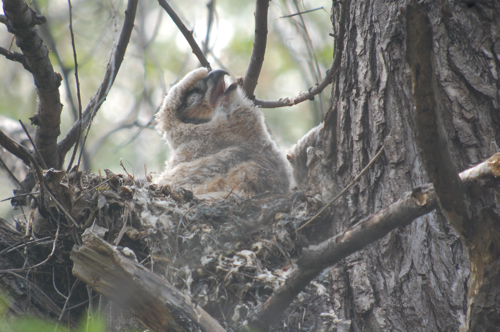

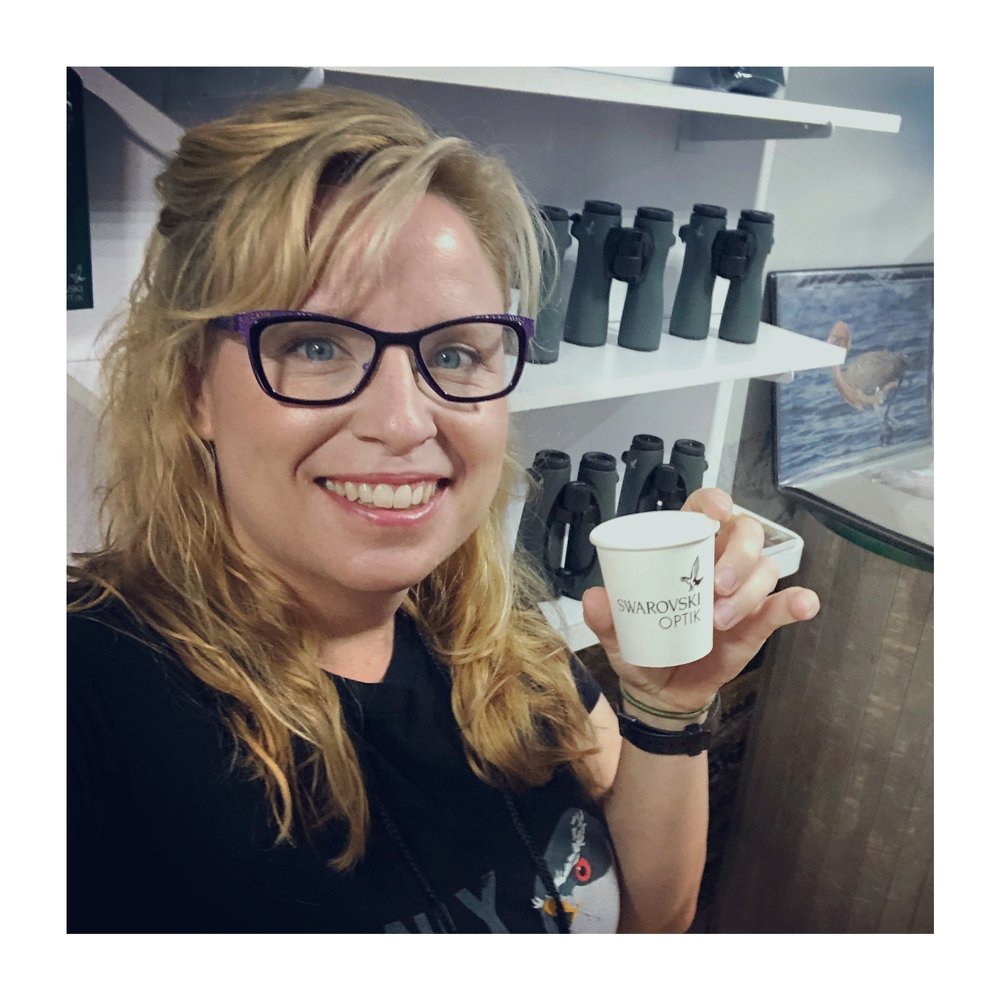
















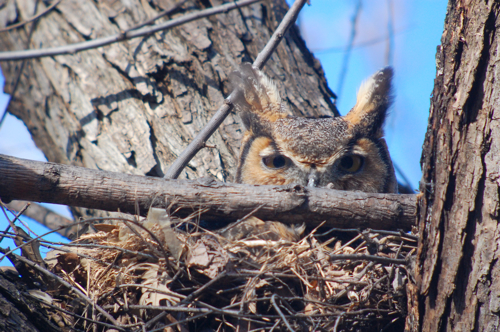 As I was working my way around my neighborhood the other day
As I was working my way around my neighborhood the other day 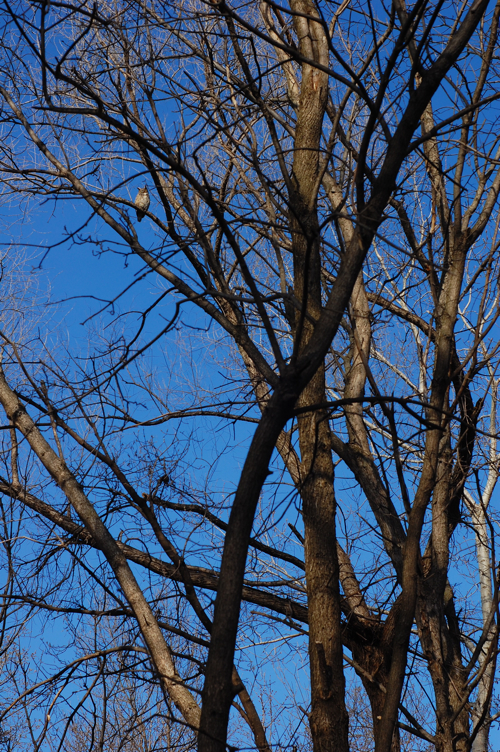
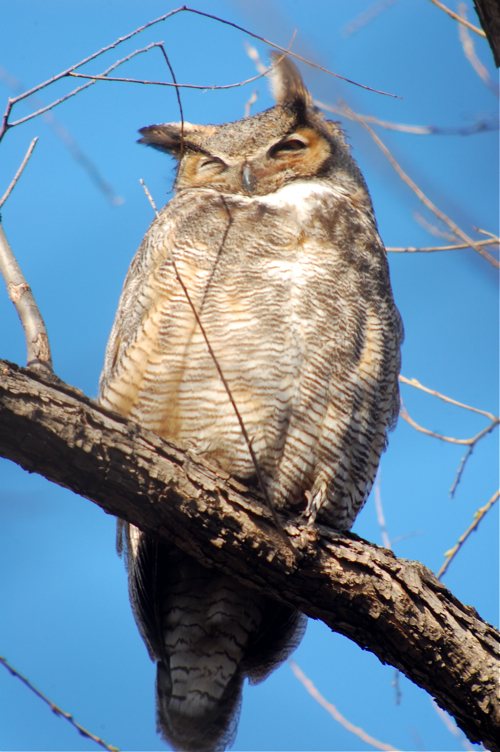
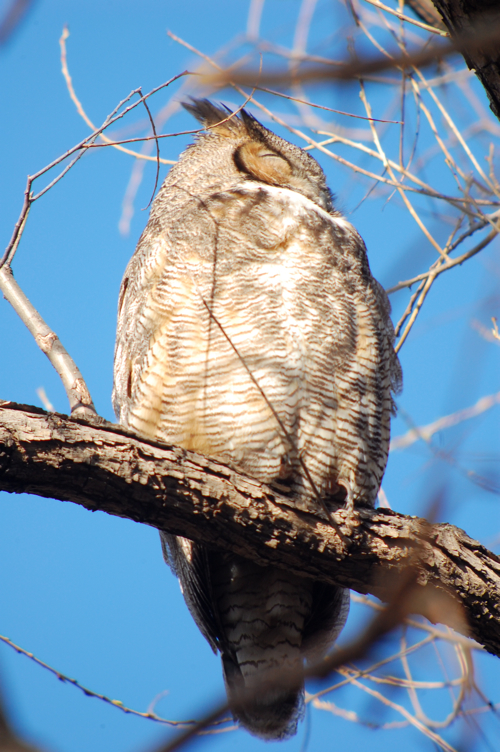
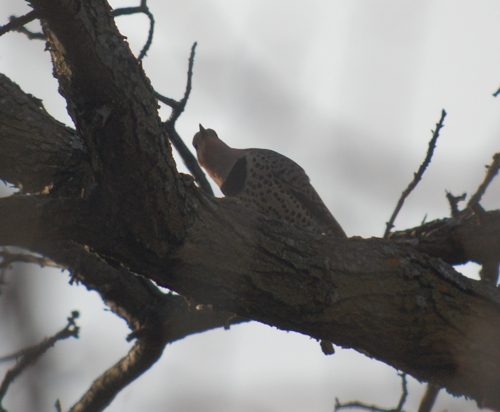
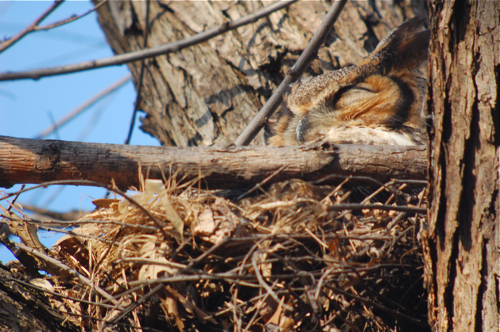
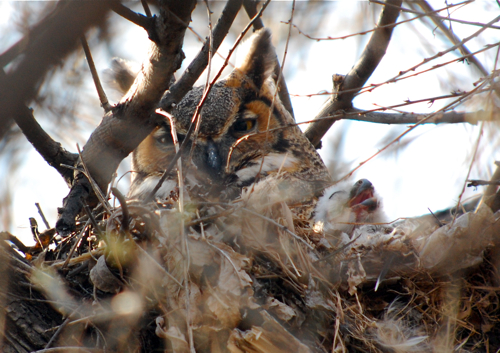
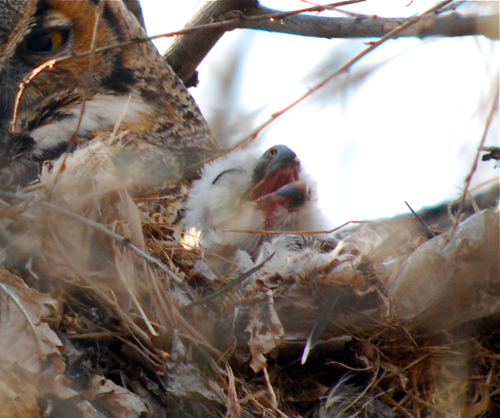
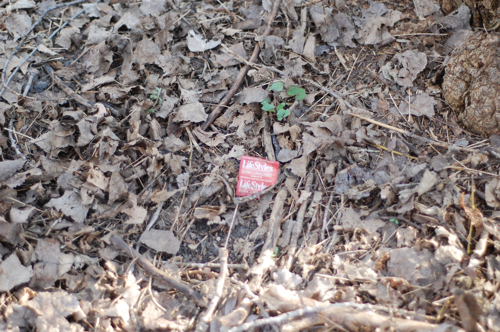
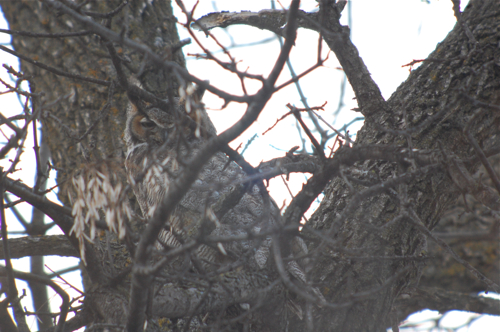 Here's the male owl that's nesting near my apartment. Look at how well those feathers blend with that bark. I've said it before and I'll say it again, "How many owls do I walk under in a year and never notice? 30?"
Here's the male owl that's nesting near my apartment. Look at how well those feathers blend with that bark. I've said it before and I'll say it again, "How many owls do I walk under in a year and never notice? 30?"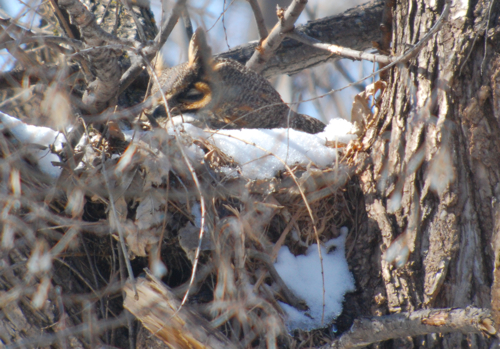 The great horned near my apartment is still incubating--I got this photo on Friday. I think the chicks should have hatched this weekend, hope to see them soon.
The great horned near my apartment is still incubating--I got this photo on Friday. I think the chicks should have hatched this weekend, hope to see them soon.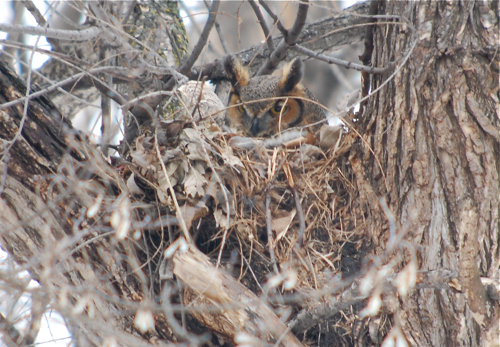
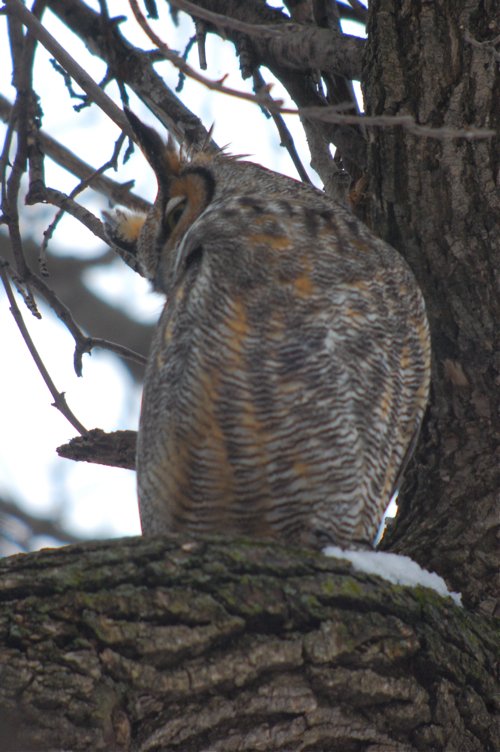
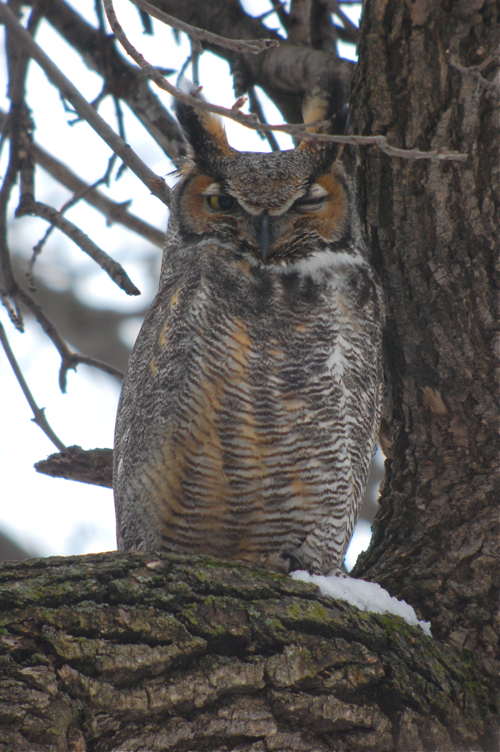
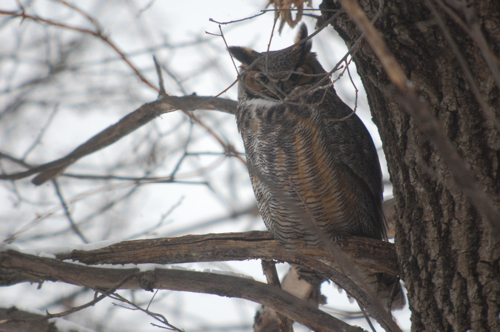 I mentioned earlier that there's
I mentioned earlier that there's 





